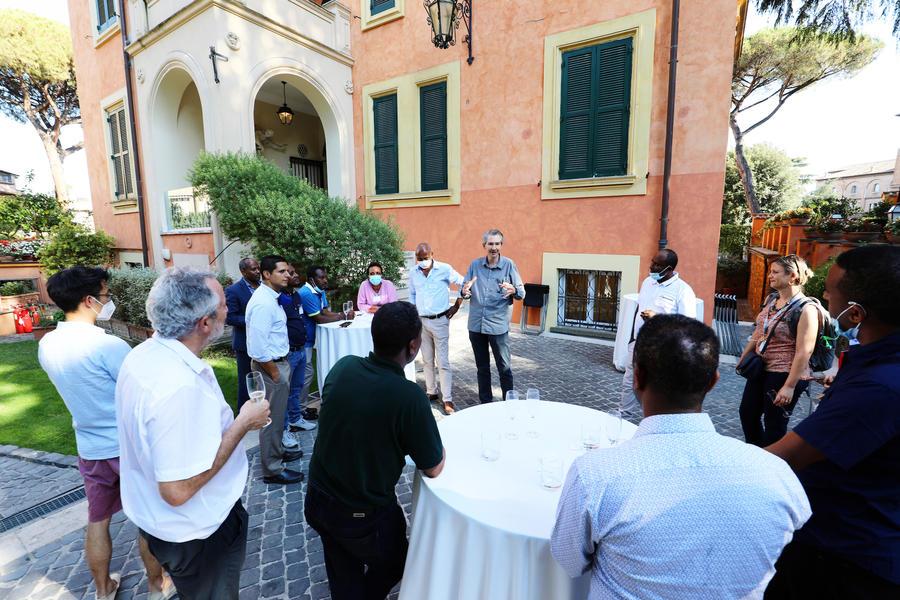Blog Trial by pasta: new uses for traditional Ethiopian wheat varieties

The Alliance has joined with Ethiopian research partners and Italian pasta makers to explore a new use for durum wheat varieties.
The smell of cooking pasta wafts across Rome’s Aventine Hill - a normal experience for late afternoon; but, this day, with a unique twist. Outside the Alliance Headquarters building, chefs serve up an innovative kind of pasta - made out of durum wheat from Ethiopia.
Video filmed by Shawn Landersz.
Putting Ethiopian wheat to the test… and the taste
This marked the culmination of a long-awaited trip: the delegation of Ethiopian government, private sector, and farmer representatives and researchers have been part of an ongoing project* to build the value chain for Ethiopian Traditional durum wheat varieties. This wheat has been grown in the country for over 3,000 years; however, it is at risk of disappearing and being replaced by soft wheat varieties, which more easily make it to the market.
To rescue this diversity, Ethiopian farmers and researchers carefully selected 10 varieties based on field performance, taste, and potential use from an initial pool of over 700 traditional accessions. These were sent to the Mediterranean Agronomic Institute CIHEAM Bari for quality analysis and, ultimately, to be made into pasta.
When travel was finally feasible in summer 2021, the Ethiopian visitors endured record-high temperatures to witness the process firsthand in Southern Italy. Guided by Carlo Fadda (Alliance Research Director, biodiversity for food and nutrition) the group had the opportunity to visit farms (to observe how traditional varieties are part of Italian agriculture), pasta companies (to study infrastructure and machinery), and retailers (to understand the potential premiums fetched by products made by traditional varieties).
Back at the newly opened Alliance Headquarters in Rome, the group tasted the product for the first time. The result:



Alliance scientist Yosef Gebrehawaryat Kidane (above, far right) has been researching durum wheat since 2012. He says:
“I am happy today. I know the performance of these varieties in the field, the agronomy is quite familiar to me. But I have never seen them on the table. Now I am chewing them, and the taste is fantastic.”

Tadesse Dessalegn Woldegiorgis, Green Innovation Center of GIZ, Ethiopia (left)
“Durum is by nature a very hard wheat suitable for pasta products. We have seen a number of varieties of high quality for pasta. We will continue working on them with (the Alliance of) Bioversity International and other actors to promote them.”

Mengitsu Kassa Oma, KOJJ Pasta Factory (right)
“The product is unique. The quality specifications, the nutritional aspects, everything is good.”
Bringing agrobiodiversity into markets and kitchens
Director General Juan Lucas Restrepo welcomed the guests and called the pasta: “a nice way to see how, across the value chain, unlocking the potential of agrobiodiversity benefits farmers and consumers”.
The participants are hopeful that subsequent interest in the product can spur the cultivation and use of varieties that are climate-resilient and nutritious.
Habtamu Hailu Geleta, from Ethiopia’s Ministry of Agriculture, said: “I’m grateful for our durum wheat varieties to become part of the food system, and everybody’s diets.”


*This trip was part of the project Managing Biodiversity to Increase Returns from Landscape Investments: Value Chains for Local Crop Varieties, focusing on Durum Wheat, financed by the World Bank (Number: 1260472 ) and implemented by Bioversity International and CIHEAM Bari (LoA N. L20HQ153).
All photos and video are by: Shawn Landersz
